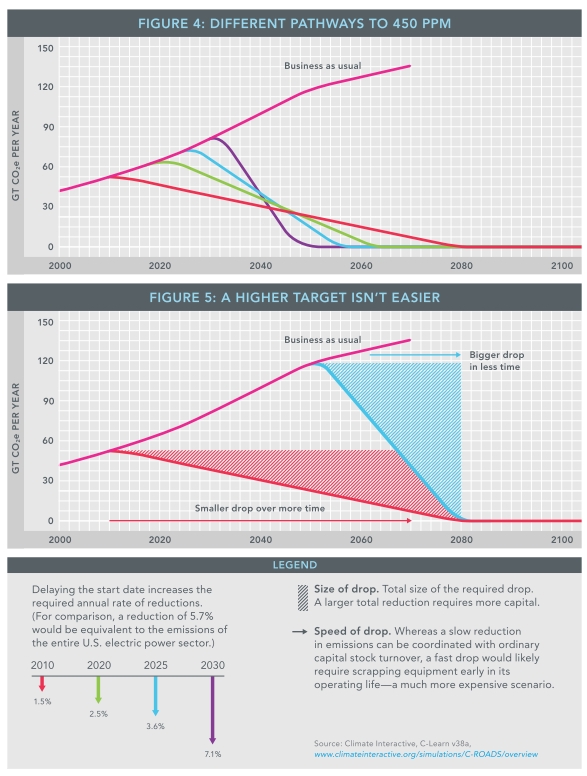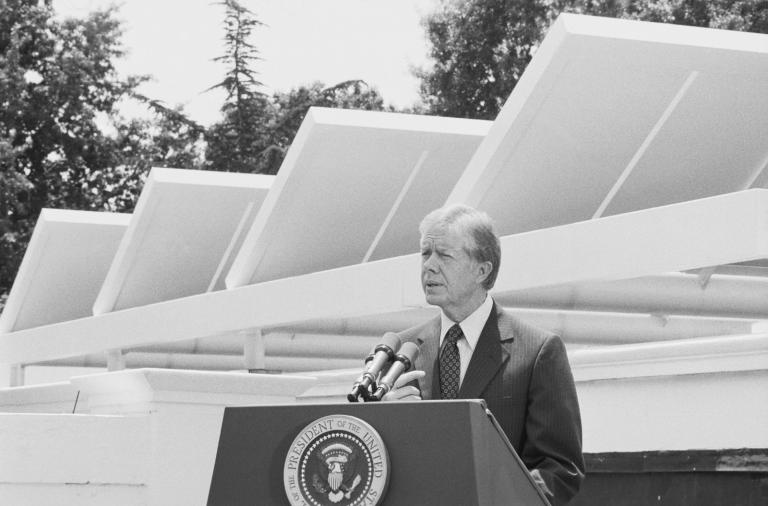 In my last post, I offered a brief introduction to the “rebound effect,” by which energy demand, after dropping in response to energy efficiency gains, “rebounds” back upward as the money/energy savings are spent elsewhere. The academic literature shows that rebound effects are real and in some cases substantial, but highly context-dependent and devilishly hard to measure. Go read that post for background.
In my last post, I offered a brief introduction to the “rebound effect,” by which energy demand, after dropping in response to energy efficiency gains, “rebounds” back upward as the money/energy savings are spent elsewhere. The academic literature shows that rebound effects are real and in some cases substantial, but highly context-dependent and devilishly hard to measure. Go read that post for background.
The question for today’s post is: So what? What are the policy implications?
Discussion of rebound effects is often taken to be “anti-efficiency,” so the most important conclusion to emphasize is: The existence of rebound effects does not harm the case for energy efficiency. In any way. At all. Even a little.
Again: There is no argument for energy efficiency that is rendered moot or false by the existence of rebound effects. The rebound effect is an interesting side effect of energy efficiency but is in no case an argument against pursuing it. Efficiency is good for economic productivity; it is progressive, in that it helps the poorest (who spend the highest percentage of their income on energy) the most; it is labor-intensive, so it creates jobs; and it reduces conventional pollutants. No matter what the rebound literature ends up concluding, it remains true that we radically underinvest in energy efficiency relative to what is environmentally or economically optimal.
We’re clear, yes? Energy efficiency: still awesome. Rebound effects or no rebound effects.
What’s more, from what I can tell, no one who writes seriously about the rebound effect says otherwise. The Breakthrough Institute, which was attacked as anti-efficiency in the wake of their rebound report, specifically says that energy efficiency “makes great sense from an economic development and human welfare perspective.”
The only thing cast into question by rebound effects is the precise extent to which energy efficiency reduces aggregate energy use, and thus greenhouse gas emissions. It is efficiency’s efficacy as a tool of climate policy that is at issue. (Now say “efficiency’s efficacy” five times fast.) This is of interest to national and international policymakers, at least insofar as they care about climate, but not particularly germane to any individual or business contemplating efficiency improvements.
So, now what we’re clear on that: What are the implications of rebound effects for climate policy?
Here’s something I think will be uncontroversial: We should strive to understand rebound effects and incorporate them into our climate policy scenarios. It came as something of a shock to me to discover that this isn’t happening now. For instance, according to the E.U. literature review on the rebound effect, “[energy efficiency] projections from the IPPC … do not incorporate the rebound effect.” Nor, apparently, did the Stern Review, nor do conventional climate economic models.
That seems crazy. Rebound effects — particularly the indirect and economy-wide varieties — might be difficult to measure and context-sensitive, but we can’t pretend like they don’t exist. Many of the familiar climate scenarios expect energy efficiency to reduce total energy use by 30 or even 50 percent by 2030. If they are failing to account for rebound effects, then they are overestimating what efficiency will be able to accomplish, especially in the developing world, which is where most growth is expected.
So let’s assume we do manage to get some clarity and the economy-wide rebound effect turns out to be 50 percent. (Bottom-up sectoral studies usually find it lower; some attempts to model the total macroecomic effect find it higher; this paper arrives at roughly 50 percent by 2030. We’ll use that for illustrative purposes.) That means that we’ll get half the drop in energy use that we expected from efficiency — 15 percent by 2030, say, instead of 30 percent. And that, in turn, means that the gap will have to be filled by something else, some other “wedge.”
Is this a big deal? I mean, obviously it’s a big deal conceptually, but does it matter to our current political circumstances and policy planning? The Breakthrough folks say it does.Their logic is as follows: If renewables are already scaling up as fast as they can, and energy efficiency won’t fill the gap it was thought to fill, then we have to fill that gap with something else. And in their minds that something else is nuclear power and carbon capture and sequestration (CCS). “We can’t do it all with renewables and efficiency,” in other words. We need all forms of low-carbon energy to get cheaper, fast.
I do not entirely buy that.
It’s not that I don’t buy the need for large-scale innovation on clean energy. Of course I do! Where I disagree is about whether this has material implications for our short- and mid-term political/policy situation. To explain why, let’s begin with this:
That’s from a report done by the folks at ClimateWorks called “The Costs of Delay.” It shows roughly the same thing I tried to show in my “brutal logic” post: If we delay substantial carbon reductions by even a decade, then the rate of reductions necessary to stay within our carbon budget becomes prohibitively high. (If you check my post, you’ll see that the situation is even more dire than this graphic portrays.) Practically speaking, emission reductions must begin immediately.
Substantial, immediate emission reductions cannot be accomplished with clean energy sources, especially not with as-yet-uninvented clean energy sources. Even if a miracle breakthrough zero-carbon nuclear bananarama superfusion energy source were invented tomorrow, it would take decades for it to replace a substantial portion of the world’s energy generation infrastructure.
Point being: There is no way to stay within our carbon budget without substantial declines in energy consumption, beginning ASAP. No way.
Energy efficiency is the only way we know to reduce energy use without slowing economic growth. (I’ll explore this more in my next post.) If rebound effects reduce its efficacy, then we need to figure out how to counteract rebound effects without losing the economic benefits. We need every regulatory, legislative, pricing, and behavioral trick in the book to make efficiency work. Because the alternative, in the next few decades, is not an energy breakthrough riding to our rescue. The alternative is either a) means of reducing energy use that do slow economic growth, or b) failure and climate chaos.
Remember, the price of failure is not, as most people seem to think, stabilizing CO2 (and thus temperature) at some higher level. The price of failure is CO2 concentrations that, for all intents and purposes, never stabilize — feedbacks kick in and temperature begins rising out of control. As the ClimateWorks paper rightly emphasizes, “stabilizing at any CO2 concentration requires very low emissions.”
That’s the brutal logic of climate change. We have delayed for a perilously long time and our chances of avoiding disaster are rapidly shrinking. As climate scientist Kevin Anderson says, we are now beyond discussing what’s theoretically possible. The only thing that still matters is what’s practically possible — what’s the most we can realistically do. To stay in the neighborhood of climate safety, we’ll need:
1. Aggressive innovation, development, and deployment of clean energy sources, energy storage to bank them, and smart grids to tie them together. We are doing a tiny fraction of what we need to do along these lines.
2. Aggressive innovation, development, and deployment of energy-efficiency solutions. It may be that efficiency won’t get us what we thought it would. It may get us only 15 percent rather than 30 percent. But we by-God need that 15 percent and getting there would require vastly more investment than is currently being channeled in that direction.
3. Aggressive pricing of climate emissions. This is necessary to drive an economy-wide shift toward sustainability and, in particular, necessary to reduce the rebound effect. Raising the price of dirty energy will help prevent energy demand from bouncing back up.
4. Aggressive behavioral and economic interventions in developed countries to drive conservation and a shift away from materialism-driven growth.
5. Aggressive behavioral and economic interventions to help developing countries “leap frog” over carbon-intensive technologies and development patterns.
6. Anyf*ckingthing else we can think of.
Even if we do all that, there’s still a good chance we’re screwed.
So I’m just not sure that we should be all that spooked by the rebound effect. It is, in terms of climate policy, bad news. It shows us — as so many different strands of research have in recent years — that our task is even more daunting than we thought. But we still need efficiency. We still need everything.
In my more cynical moments, I often see arguments among wonks about the precise policy recipe for 2030 less as practical contributions than as veiled competitions for funding and attention. (And I by no means exclude myself or wonks I agree with from that.) While we’re all arguing, the U.S. is doing absolutely nothing and acting as an anchor on the rest of the world to boot. The political constraints we face are far more immediate and paralyzing than any climate model.
For the time being, climate hawks’ main task is to break through those political constraints to push for a sociopolitical shift from denial and delay to action. That means pushing innovation, pushing efficiency, pushing deployment, pushing anything done that can get done. After a decade of real, concerted action, we’ll know much, much more about the practical possibilities. Maybe we’ll find that efficiency is doing more than we thought it could, maybe less. We can rebalance our efforts accordingly. But for now, we’re effectively sitting on the railroad tracks, counting angels on the head of a pin as a freight train heads our way.
Read the next post in this series on the rebound effect.



